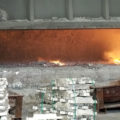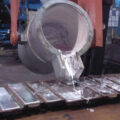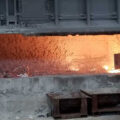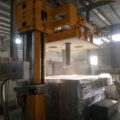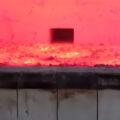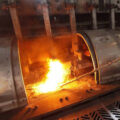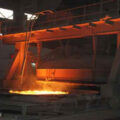The use of aluminum alloy castings is increasing, and the requirements for castings are getting higher and higher. In addition to the requirements to ensure chemical composition, mechanical properties and dimensional accuracy, aluminum alloy castings are not allowed to have shrinkage, porosity, slag holes and other casting defects. The purification of molten aluminum is one of the measures to ensure high-quality aluminum alloy products, and it is also the main means to improve the overall quality of aluminum alloys. The refining effect of molten aluminum has an important impact on the formation of pores, shrinkage cavities and inclusions, and directly affects the physical and mechanical properties of aluminum alloy castings. Without high-quality molten aluminum, even if the subsequent processing is advanced, defects will always exist in the product once they occur, and high-quality castings are difficult to obtain. Therefore, we must pay attention to the gas and inclusions in the molten aluminum, and take measures to remove the gas and inclusions in the molten aluminum.
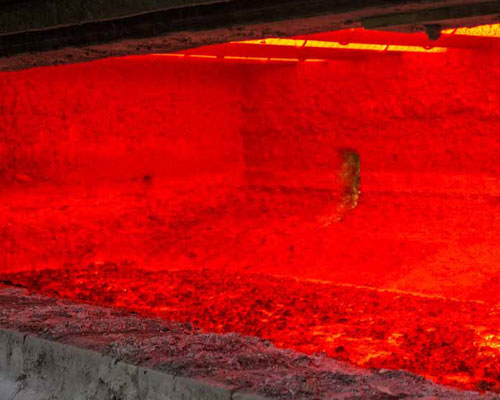
Gas and Inclusions in Molten Aluminum
The gas in molten aluminum is mainly hydrogen (about 80% to 90%), followed by nitrogen, oxygen, and carbon monoxide. Hydrogen is almost insoluble in solid aluminum, but has a large solubility in liquid. The solubility of hydrogen on the solid phase line is 0.65mL and 0.034mL per 100g of molten aluminum (under the condition of 0.1MPa), that is, the difference in solubility of hydrogen in the solid-liquid phase is 19.1 times, and per 100g of molten aluminum The normal hydrogen content is 0.1~0.4mL. Due to the difference in solubility, hydrogen tends to escape from the melt. When the hydrogen pressure is greater than the surface tension and hydrostatic pressure, bubbles are formed, which in turn creates pinholes in the casting. Therefore, in the purification of aluminum alloy melt, the main problem is that the hydrogen content of aluminum alloy is high, and the existing methods cannot meet the production requirements of high-quality aluminum alloy castings. Usually the hydrogen content per 100g aluminum can basically meet the production requirements when the hydrogen content is 0.1~0.2mL, and the hydrogen content per 100g aluminum for special requirements (such as aviation casting) should be less than 0.06mL.
Inclusions are any solids and substances other than liquids above the liquidus. Common non-metal impurities in molten aluminum include oxides, nitrides, carbides, borides, etc., most of which exist in granular form, with a typical particle size in the range of 1-30μm. Except from the charge, it is mainly the product of the chemical reaction in the melting process. The thickness of the oxide film on the aluminum surface is 2~10μm, and it increases to 200μm when it is close to the melting point. The oxide film on the liquid surface is not only thicker, but also the structure has changed; the side facing the molten aluminum is dense and has a protective effect on the molten aluminum. The outside of the molten aluminum is loose, with small holes with a diameter of 5-10μm and filled with hydrogen, air, and water vapor. If the liquid film is stirred into the molten aluminum, it will increase impurities and gas. In addition, some undesirable primary intermetallic compounds will appear in high alloy melts, such as aluminum zirconium, aluminum titanium, etc., iron-containing aluminum alloys will also form iron-rich aluminum-iron phases, aluminum-silicon-iron, and aluminum-silicon The iron phase is a needle-like compound that seriously damages the aluminum matrix and affects the mechanical properties.
There is a strong interaction between inclusions in aluminum alloy and gas. The hydrogen content in molten aluminum is greatly affected by inclusions. When the inclusion content is 0.002% and 0.02%, the corresponding hydrogen content is 0.2mL/100gAl and 0.35 mL/100gAl. In the case of the same hydrogen content, the higher the inclusion content, the higher the pinhole rate; on the contrary, when the aluminum liquid contains very low impurities, the hydrogen content is also very low; even if the hydrogen is artificially injected, it will automatically precipitate , Quickly restored to the original content. Even if a small amount of inclusions are present, the critical concentration value for the formation of pores can be significantly reduced. On the other hand, when there is no inclusion (or the inclusion content is very low), the critical hydrogen concentration to form pores can reach 0.3mL/100gAl.
Therefore, removal of impurities and gas should be carried out at the same time, which is equally important. No matter which refining method is used, the effects of degassing and impurity removal are often both, but each has its own focus.

